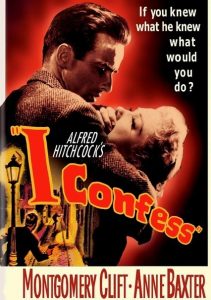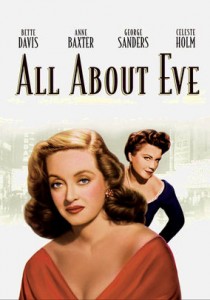I Confess-1953
Director Alfred Hitchcock
Starring Montgomery Clift, Anne Baxter
Scott’s Review #1,007

Reviewed April 2, 2020
Grade: A-
I Confess (1953) is an early effort by the brilliant Alfred Hitchcock with a decidedly religious slant but keeps the suspense and thrills commonplace like his other films.
The picture is not one of his best-remembered works but one of his least-remembered projects. This is unwarranted because the film contains all the standard elements known to the director, creating an entertaining and enthralling effort.
Montgomery Clift and Anne Baxter are featured as big Hollywood stars of the day.
Although he was not a fan of exterior shoots where he couldn’t control the elements, filming was done mainly on location in Quebec City. Numerous shots of the city landscape and interiors of its churches and other emblematic buildings, such as the Château Frontenac, were heavily featured.
This factor adds to the enjoyment as French sophistication and culture are added, and the accents provide a European influence, which is especially powerful during the final act.
A handsome Catholic priest, Father Michael Logan (Clift), wants nothing more than to be a good priest, but his calling is made complicated after someone confesses a murder to him, and he’s subsequently blamed for the death.
A World War II veteran, he harbors secrets told in the back story as a strong connection to another character comes to light. An easy way to clear his name is to reveal exactly what he knows, but doing so would break his vows as a clergyman and alienate members of his community who trust he will keep their steamy secrets very private.
Ruth Grandfort (Baxter) is a respected member of society, married to her husband Pierre (Roger Dann), a member of the Quebec legislature. They live comfortably in a lavish house with servants and regularly throw cosmopolitan parties befitting people of their stature.
Amid martinis and festive party games, Ruth keeps not one secret but two and is being blackmailed for her shenanigans. Her connection to Father Michael slowly bubbles to the surface.
Christian viewers will neither be offended nor completely embraced either. Hitchcock does not mock religion but makes sure of the conflict and demons that can encircle even a pious or righteous man.
As far back as the 1940s, Rebecca was toying with viewers and frequently adding an LGBTQ uncertainty; this can be said of I Confess.
Assumed to be in love, Father Michael offers little romantic passion or zest towards Ruth, and the connection seems one-sided. Could his descent into the Catholic Church be a front to cover up his sexuality?
Only Hitchcock will know the answer.
Eagle-eyed Hitchcock fans will undoubtedly discover similarities to his other works.
In the very first scene, an unknown man is strangled to death, collapsing to the floor. This is reminiscent of the 1948 masterpiece, Rope (1948), when an identical sequence occurs. The audience knows nothing about the stranger- yet.
In both films, even after death, the character becomes integral to the plot twists and turns in store. The tremendous use of shadows and lighting is on careful display, mirroring the look of the soon-to-come The Wrong Man (1956).
While not the cream of the crop among Hitchcock’s best film entries or even a top ten offering, I Confess (1953) deserves a viewing or two on its own merits.
Clift and Baxter have excellent chemistry and mystique, and the plot is enough to keep audiences well-occupied.
The final twenty minutes provide cat-and-mouse revelry and a shocking death, perfect for a dramatic climax to a film oozing with Hitchcock’s finest traits.

